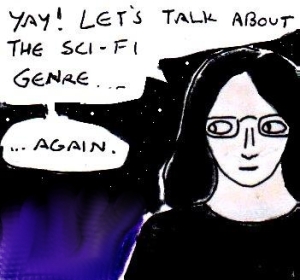Although this is an article about art, comics, literature, film etc… I’m going to have to start by talking enthusiastically about computer games for a while first. As usual, there’s a good reason for this that I hope becomes obvious later.
A coupe of days before I originally prepared the first draft of this article, I suddenly noticed that the fourth instalment of the “Temple Of The Lizard Men” series of fan-made “Doom II” levels had finally been released 🙂 And, unlike some modern “Doom II” levels, it would actually run on my computer too 🙂
If you’ve never heard of “Temple Of The Lizard Men” before, it’s a series of full-length fan-made sci-fi/horror level sets for “Doom II”/”Final Doom” which revolve around fighting lizard monsters in ancient Aztec/Maya-style temples. It’s kind of a little bit like the original “Unreal” mixed with some elements from “Serious Sam: The Second Encounter“, but with more horror elements.

This is a screenshot from “Temple Of The Lizard Men IV” (2017). Yes! A modern “Doom II” WAD that both looks cool AND works with slightly older versions of “GZ Doom” too 🙂
Anyway, like with another really cool set of “Doom II” levels called “Ancient Aliens” (and the previous “Lizard Men” level sets, like this one), I really love it when people blend ancient-style architecture and futuristic sci-fi.
Some other example of this blending of ancient civilisations and futuristic sci-fi include Iron Maiden’s “The Book Of Souls” album, which does this in the opening song. Then there are the various zones in “The Crystal Maze“, and the scenes from Ridley Scott’s “Blade Runner” that were filmed in the Mayan-inspired Ennis House. Or perhaps the futuristic version of Ancient Egypt in “Stargate SG-1“, or.. Well, I could go on for a while.
So, why are mixtures of the ancient and the futuristic so incredibly cool?
The first reason is that because “old” things are juxtaposed with things that are meant to be from the distant future, it creates something of an association between the two things within the minds of the audience.
This means that whenever the audience see old buildings, old castles etc… in other contexts, they seem cooler and more “relevant” due to their association with modern creative works (for example, although it doesn’t really contain any sci-fi elements, “Game Of Thrones” changed my entire attitude towards the middle ages). So, these types of stories, films, games etc.. help to make history even more interesting than it already is.
The second reason is because of the contrast between the distant past and the distant future. Usually, creative works in this genre will include the idea that people in the ancient world were more intelligent and/or advanced than we usually think. And not only is this really intriguing but, in some cases, it’s actually true too. For example, just look at ancient Persia – they had a type of air conditioning and a type of refrigerator too.
Thirdly, there’s the fact that things in this genre include two time periods that we’ll never get to see directly (yes, we can deduce things about the past from historical artefacts/documents and we can attempt to predict the distant future, but we never get to directly experience either).
So, seeing a representation of both time periods within the same creative work reminds us of the vast scale of time. It also makes us realise that the present day is somewhere between the ancient past and the distant future. So, by extension, our lives already include elements from both.
Finally, this genre is cool because it reminds us that some things are truly timeless. Whether it is lighting design, architecture, visual arts etc… things in this genre help to remind us that there’s nothing entirely “new” in the world.
————-
Anyway, I hope that this was interesting 🙂

